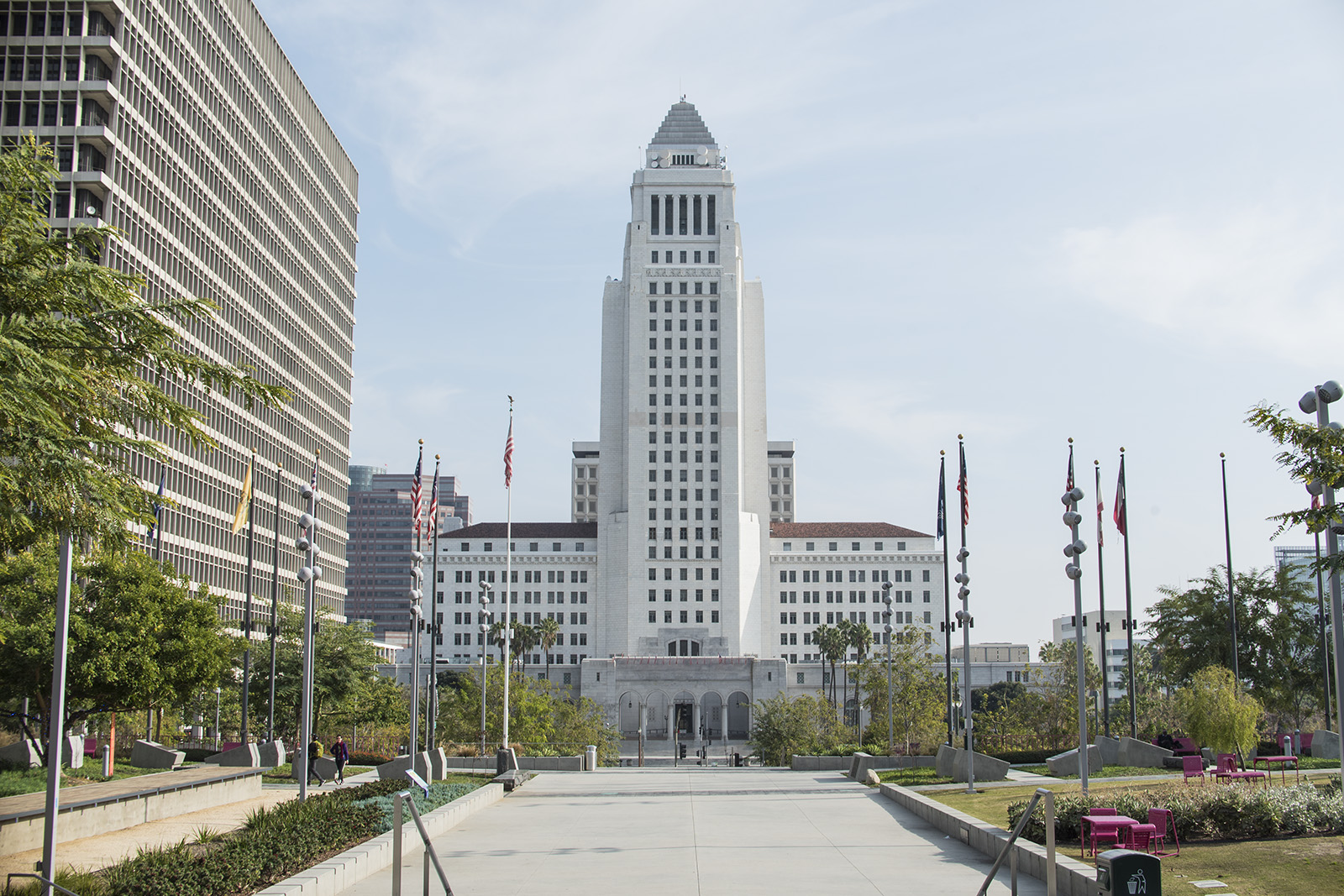Failure of Senate Bill 50 represents a step backward for affordable housing

Senate Bill 50’s failure to pass through state legislature means further detrimental setbacks in the timeline for alleviating the severe ongoing homelessness issue in Los Angeles. (Daily Bruin file photo)

By Angela Hana
Feb. 18, 2020 11:36 p.m.
Three steps forward and two steps back still feels like forward movement.
But when those two steps back leave thousands without permanent housing, problems quickly arise.
One of the most significant proposed housing bills in California was recently nixed by the state Senate. Senate Bill 50 was introduced in 2019 but failed to pass by three votes. There was great opposition from not-in-my-backyard groups opposing major developments in their neighborhoods, while housing justice advocates argued that SB 50 wouldn’t do enough to solve the housing crisis.
If passed, SB 50 would have limited single-family zoning and allowed for the development of denser housing throughout suburban neighborhoods in Los Angeles County. Zoning codes are used to limit the types of residential building on certain pieces of land, and many of these codes have served as racially-motivated methods of segregation.
But this problem isn’t new, nor is it something for council members to brush over.
About 75% of LA is zoned for single-family homes. Combinations of single-family homes and multiplexes are uncommon in neighborhoods where zoning codes are enforced, because of limited opportunities for multiplexes to be built. This lack of dense housing contributes to the housing crisis today.
To solve this housing crisis, barriers to affordable housing – such as antiquated zoning restrictions – must be eliminated. California and LA policymakers need to reduce the limitations for building in suburban neighborhoods, while altering zoning laws to allow for the building of denser and taller buildings – a process known as upzoning. And new construction isn’t enough – the council needs to ensure affordable housing via inclusionary zoning practices.
Without immediate change, the shortage of housing will only intensify, and displacement will become more likely in the face of rising rent costs.
In 2019, there were 58,936 reported individuals experiencing homelessness residing in LA County. Some of these individuals may have been unable to secure housing because of the restrictive zoning laws placed throughout the county, and inaction by lawmakers only exacerbates the problem.
Gus Wendel, the assistant director of cityLAB at UCLA, said LA needs an all-hands-on-deck approach to building affordable housing, which includes looking at policy and policy tools such as upzoning.
“Not all communities are the same – they have different histories,” Wendel said. “A one-size-fits-all solution is not going to work.”
Single-family zoning exacerbates disparities through the segregation of residents based on race, ethnicity and income brackets. The first LA zoning code was introduced in 1920. Redlining maps were created, and strict racial covenants were implemented to deter homeowners from selling or renting to nonwhite residents.
These restrictions were most commonly enforced in single-family neighborhoods.
“Eliminating single-family zoning doesn’t eliminate the exclusionary aspects of real estate markets or of housing policies, but it’s certainly one very clear way in which the powers of zoning have been used to exclude people who can’t pay for large single-family homes on large plots of land,” said Michael Lens, an associate professor of urban planning and public policy at UCLA.
Lens said it is not sufficient to address the housing crisis without solving the drastic rent problem in California.
To meet the demand for affordable housing, there needs to be a greater focus on funding housing subsidies. The cost of market rate units is too high for low-income residents like college students, and is completely unattainable for the large population of individuals experiencing homelessness in the city. UCLA students are faced with the highest rent prices in California.
Increasing subsidized housing would lessen the burden for these low-income renters.
“We need higher density and we need more places for people to live,” said Ryan Snyder, the principal of active transportation at the Transpo Group.
Snyder said he believes increasing smaller housing and collective housing is an innovative way to approach the housing crisis. Smaller housing would include dormitory models, while collective housing would have more people sharing a space, such as having 10 people living in a large suburban home.
“It’s a complete moral failure on the part of our community and it’s an issue that is bigger than what can be solved in just the city of LA,” Snyder said. “The state needs to do a whole lot more – it’s something that needs a more urgent response at all levels of government.”
And other states and large cities have already committed to limiting their zoning laws.
Oregon is working to eliminate single-family zoning statewide, while cities such as Seattle and Austin, Texas, are loosening zoning codes. Seattle established mandatory housing affordability rules where developers are presented with the decision of either financially contributing to an affordable housing fund or building new affordable housing units.
Seattle has the third-largest homeless population in the United States, and it has effectively limited zoning laws. As the city with the largest homeless population in the nation, LA should be able to follow suit.
Of course, some experts oppose upzoning because it can lead to gentrification. But this just stresses the need to establish provisions that will ensure control over responsible project design – direct displacement of low-income neighborhoods can be avoided through strong and enforceable mandates.
In order to ensure affordable housing, the city would need to enforce inclusionary zoning which ensures that a certain percentage of housing units are within a reasonable price range. Upzoning alone is not sufficient in addressing the housing shortage, but when paired with less restrictive policies, cities could avoid displacing low-income communities and nontraditional housing options could make an impact.
To solve the longstanding lack of affordable housing in LA, new housing must be built.
And limiting zoning restrictions is the first step forward.


